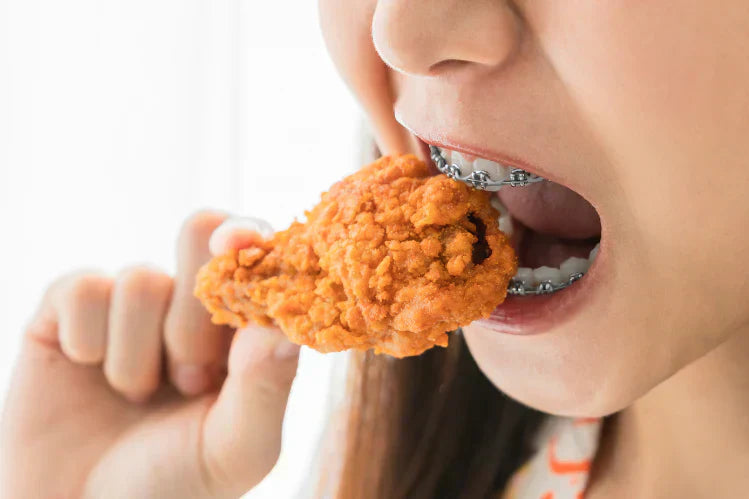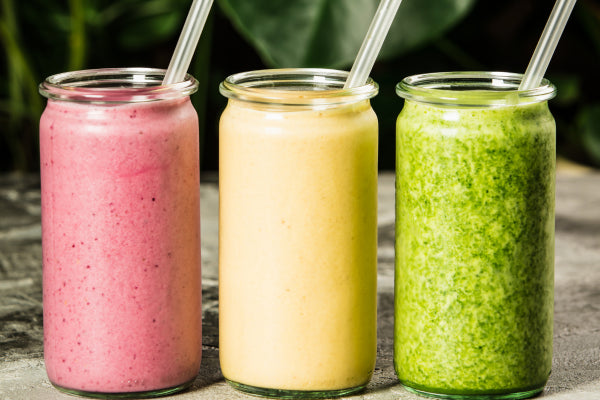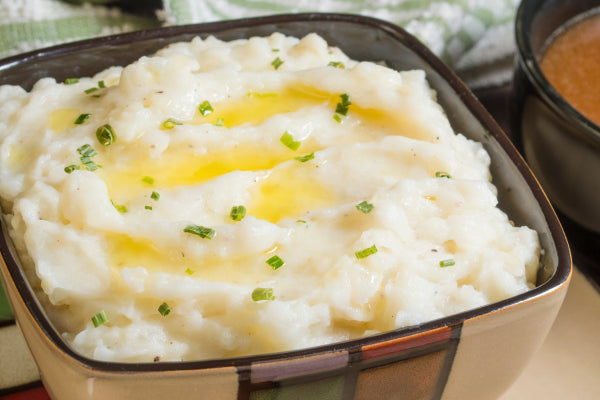
Table of Contents
Starting the process of using braces to achieve a straighter smile is an accomplishment, However, the first few days can be uncomfortable as your mouth adjusts to the new appliance. One of the biggest adjustments is your new diet; knowing what to eat (and avoid) with braces in the first week is essential for comfort and the success of your orthodontic treatment.
At Smilepath, we are dedicated to making your orthodontic journey as easy as possible. This guide contains complete information on soft foods for new braces, easy meal ideas that are braces-friendly, and important details about foods to avoid with braces. Let's dive right in and talk about how you can navigate the first week with braces.
Understanding the Importance of Diet in the First Week of Braces
The first week after getting braces is undoubtedly a tough one, as you adjust to your new appliance. You will likely notice soreness and discomfort in your teeth and gums because the braces put constant pressure on your teeth to align each tooth into its correct place gradually. Initially, it will be difficult to do everything from eating and speaking to brushing your teeth.
During your first week of having braces, you must pay close attention to what you eat. Eating the right foods not only helps reduce pain and irritation but also maintains the integrity of your braces. Therefore, soft foods that are easy to chew should be your go-to.
Consider soft foods such as scrambled eggs, mashed potatoes, smooth soups, yogurt, smoothies, and steamed vegetables. These foods require very little chewing, which will reduce the pressure being put on your braces and sensitive teeth.
Avoid hard, crunchy, or sticky foods. Although nuts, popcorn, hard candy, and chewing gum may be tempting, they can become lodged in the brackets/wires and delay your treatment or even break them.
So, if you were wondering, “ Can you eat popcorn with braces ? ” The answer is no, popcorn kernels can cause significant damage to your braces and should be completely avoided. If you stay on a braces-friendly diet for your first week, you not only set a foundation for a better experience, but you will also maximize your progress throughout treatment, allowing for fewer days before your next appointment!
Soft Foods for New Braces: Your Go-To Options
Incorporating soft foods for new braces into your diet is essential during the first week. These foods are not only gentle on your mouth but also provide the necessary nutrients for healing and maintaining overall health.
Breakfast Ideas
Oatmeal

A warm, creamy bowl of oatmeal is not only comforting but also one of the best breakfast options for anyone adjusting to new braces. The soft texture requires minimal chewing, easing the pressure on sore teeth. Oatmeal is also a great source of fiber and slow-digesting carbohydrates, which help keep you full and energized throughout the morning. To make it more flavorful and nutritious, consider mixing in mashed bananas for natural sweetness or a spoonful of applesauce for added smoothness and a subtle fruity tang. You can even sprinkle a little cinnamon or a drop of vanilla extract for extra warmth without adding any hard or sticky ingredients.
Scrambled Eggs

Fluffy, soft, creamy, and full of protein, scrambled eggs are a braces-friendly powerhouse for breakfast. They’re easy to make, soft on the teeth, and extremely versatile. Adding soft ingredients such as a little cream cheese or a mild shredded cheese makes them creamier and adds calcium for strong, healthy teeth. You can also finely chop soft-cooked vegetables like spinach or mushrooms to add nutrition without compromising the softness. Avoid crisping them too much in the pan because the softness is key to avoiding problems when you have braces.
Greek Yogurt

Greek yogurt is a smooth, nutrient-packed option that fits the bill for a braces-safe breakfast. Not only is it filled with calcium, which is critical for strong teeth and bones, but it also has probiotics, which help keep the gums and gut healthy. Stick to plain or naturally flavored Greek yogurt, and avoid adding granola, nuts, or other crunchy toppings that can be hard on braces and sore teeth. If you'd like, add flavor and nutrition by stirring in a bit of honey, some smashed up berries, or swirls of pureed fruit. Greek yogurt is a cool way to start your day without much work on your mouth.
Smoothies

Smoothies are the ultimate breakfast solution when chewing feels like a chore. They’re cold, soothing, and easy to sip, which makes them perfect for easing braces-related soreness. You can blend a combination of fruits like bananas, strawberries, mangoes, or blueberries with a base of yogurt, almond milk, or regular milk to create a creamy, nutritious drink. Add-ins like flaxseed, chia seeds, or a scoop of protein powder are great for an extra health boost, just make sure they’re ground finely to maintain a smooth texture. A drizzle of honey or a bit of vanilla extract can enhance flavor naturally without irritating your braces.
Lunch Options
Soups

Soups are a go-to comfort meal for anyone dealing with the soreness and sensitivity that braces can cause, especially in the early days. Warm, soothing options like tomato bisque, creamy broccoli, or a gentle chicken noodle soup are not only easy to consume but also offer a nourishing, hydrating experience. They require minimal chewing, which gives your jaw and teeth a much-needed break. If you're choosing a heartier soup like chicken or vegetable, be sure to finely chop or puree any solid ingredients. Soft-cooked lentils, beans, or shredded chicken can add protein without being tough on your teeth. Just ensure everything is cooked to a soft texture to avoid irritating the teeth or damaging the braces.
Mashed Potatoes

Few dishes offer the creamy comfort of mashed potatoes, making them a top-tier choice for those wearing braces. Their smooth texture glides easily over sensitive teeth and gums, reducing the risk of pain or damage. They're also incredibly customizable—whether you enjoy them plain, with a hint of butter, grated cheese, or even a swirl of soft sour cream for richness. For added nutrition, consider mixing in pureed vegetables like cauliflower or carrots, which blend seamlessly while upping the vitamin content. Just make sure no skins or hard bits sneak in, and you’ve got a filling, braces-friendly side dish or main.
Avocado Toast

Avocados are a nutritional powerhouse, packed with healthy fats, vitamin E, and potassium, all of which support overall health, including your gums. When mashed into a creamy spread and served on soft, crustless bread, they make a satisfying and braces-safe meal. To ensure it's gentle on your mouth, avoid toasting the bread to a crisp. Opt for soft whole wheat or white sandwich bread that doesn't require heavy chewing. For extra flavor, you can lightly season the avocado with salt, pepper, or a dash of lemon juice. Avoid toppings like seeds, nuts, or raw onions, which can be hard on tender teeth.
Soft Pasta

Pasta is a fantastic option for a satisfying meal that’s both easy to chew and gentle on braces, as long as it’s cooked to a soft, tender consistency. Choose traditional options like macaroni, penne, or spaghetti, and coat them with braces-friendly sauces like creamy Alfredo, smooth marinara, or pesto (without crunchy bits). These sauces add flavor and moisture, helping the pasta go down smoothly. Avoid tossing in hard cheeses, nuts, or crispy breadcrumbs, which could damage brackets or get lodged in wires. You can also mix in soft-cooked vegetables like zucchini, spinach, or mushrooms for added nutrients without compromising texture.
Dinner Suggestions
Baked Fish

Fish, particularly varieties like salmon, tilapia, or cod, are an excellent protein source for those wearing braces. When baked properly, these fish become soft and flaky, requiring minimal effort to chew, ideal for sensitive teeth during the first week of orthodontic treatment. Salmon is especially beneficial due to its high content of omega-3 fatty acids, which support not just brain and heart health but also reduce inflammation, which can help soothe swollen or irritated gums. To create a balanced, braces-friendly meal, pair your baked fish with steamed vegetables or soft-cooked grains like couscous or quinoa. Avoid crispy fish skin or crunchy toppings that could interfere with your braces.
Steamed Vegetables

While raw vegetables like carrots and broccoli are healthy, their crunchy texture makes them unsuitable for new braces wearers. However, steaming vegetables transforms them into tender, easy-to-chew sides that are packed with vitamins, minerals, and fiber. Carrots, broccoli, zucchini, cauliflower, and green beans all soften beautifully when steamed. This gentle cooking method not only preserves nutrients but also prevents any damage to your braces. Lightly seasoning them with herbs, olive oil, or a sprinkle of grated cheese can enhance their taste without adding any hard elements. Including these veggies in your meals supports gum health and digestion while being gentle on your teeth.
Meatloaf or Meatballs

When you're craving something hearty and protein-packed, meatloaf or meatballs are an ideal choice for those with braces. Made with ground meat—such as beef, chicken, or turkey—these dishes can be baked until soft and moist, allowing them to melt in your mouth with minimal chewing. To make them even more braces-friendly, you can mix in breadcrumbs soaked in milk or finely chopped vegetables, which creates a softer texture. Pair them with a smooth gravy or tomato-based sauce to prevent dryness, and serve alongside mashed potatoes or soft pasta for a satisfying, well-rounded meal. Avoid any hard crusts or charred edges that could be difficult to bite into.
Foods to Avoid with Braces: Protecting Your Investment
Understanding what not to eat with braces is crucial to prevent damage to your orthodontic appliances and avoid prolonging your treatment.
Hard Foods
- Nuts: Can break wires and brackets.
- Hard Candies: Pose a risk of damaging braces and should be avoided.
- Raw Vegetables: Carrots and celery are too hard; opt for steamed versions instead.
- Ice: Chewing ice can cause brackets to pop off.
Sticky and Chewy Foods
- Gum: Can get stuck in braces and is difficult to clean.
- Caramel and Taffy: These can pull on brackets and wires, causing damage.
- Chewy Bread: Bagels and hard rolls can be tough to chew and may harm your braces.
Sugary Foods and Beverages
- Soda and Sugary Drinks: Increase the risk of cavities and should be limited.
- Candy: High sugar content can lead to plaque buildup around braces.
Practical Tips for Eating with Braces
Adapting to braces involves more than just changing your diet. Here are some eating tips for braces wearers to help you navigate this new experience:
- Cut Food into Small Pieces: This reduces the need for excessive chewing and minimizes the risk of damaging your braces.
- Chew with Your Back Teeth: Using your molars can help prevent brackets from popping off your front teeth.
- Avoid biting into Hard Foods: Instead of biting into apples or corn on the cob, cut them into manageable pieces.
- Stay Hydrated: Drinking water helps wash away food particles and keeps your mouth clean.
- Maintain Oral Hygiene: Brush and floss after every meal to prevent food from getting stuck in your braces.
Skip the Hassle of Picking the Right Food with Braces
While traditional braces are known for their effectiveness, they come with a long list of food restrictions and daily discomfort. Smilepath clear aligners change the game by offering a modern, hassle-free alternative, with no dietary restrictions at all.
- Eat Freely: Since Smilepath aligners are removable, you can enjoy all your favorite foods, crunchy, chewy, or sticky, without worrying about damaging wires or brackets.
- Total Comfort: Say goodbye to painful metal edges. Our aligners are designed to fit smoothly and snugly, with no irritation to your cheeks or gums.
- Invisible Confidence: Made with clear, medical-grade plastic, Smilepath aligners are virtually invisible, so you can straighten your teeth without anyone noticing.
- Live Life Unrestricted: Whether you're out at a party, having a date night, or just enjoying popcorn at the movies, Smilepath lets you live your life without limitations.
By choosing Smilepath, you’re not just straightening your smile, you’re choosing freedom, comfort, and confidence every step of the way.
Mindful Eating With Braces
The first week of braces care is crucial. Staying mindful of your diet in the first week can make a huge difference in your comfort and progress. How long do braces take to show results or complete treatment depends mostly on your compliance with the orthodontist's instructions. If you’re following the orthodontist's advice, most orthodontic treatments will typically last between 12 to 24 months, depending on the severity of misalignment. The first week with braces requires careful planning about what foods to eat to be comfortable and protect your orthodontic investment. Take the time to pay attention to the go-to soft foods for new braces (e.g. oatmeal, soups, mashed potatoes) and what foods to avoid with braces (e.g. raw vegetables, nuts, hard candy), to ensure a smooth transition.
Remember, with Smilepath, we're always here to help you every step of the way! If you're looking for a less restrictive way to straighten your teeth than traditional braces, check out our clear aligner options today!
FAQs
Avoid hard, sticky, crunchy, or chewy foods like nuts, popcorn, gum, caramel, and raw carrots, as they can damage brackets and wires.
Stick to soft, easy-to-chew foods like oatmeal, mashed potatoes, yogurt, soups, scrambled eggs, and smoothies to reduce discomfort.
Most people can gradually return to a more normal diet after the first 1–2 weeks, but some restrictions on hard or sticky foods remain throughout the treatment.
Yes, but choose soft burgers without crusty buns or hard toppings. Cut them into smaller bites to avoid putting pressure on your braces.
Citations:
Higuera, V. (2019, September 19). Foods you can and shouldn’t eat if you have braces. Healthline. https://www.healthline.com/health/what-can-you-eat-with-braces
WebMD Editorial Contributor. (2023, June 30). What to know about eating with braces. WebMD. https://www.webmd.com/oral-health/what-to-know-about-eating-with-braces




 Australia
Australia New Zealand
New Zealand Malaysia
Malaysia English
English Portuguese
Portuguese English
English English
English English
English English
English English
English Canada
Canada